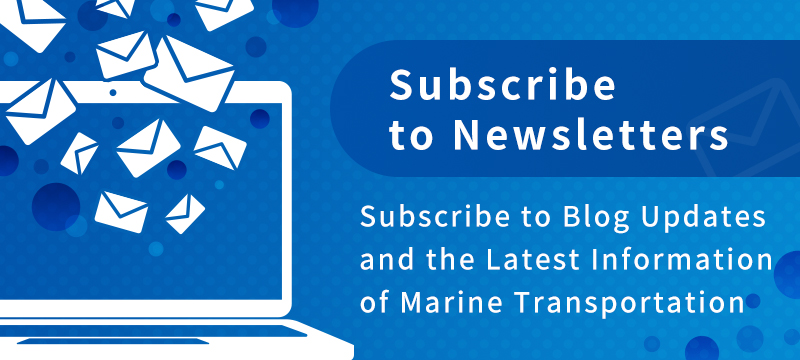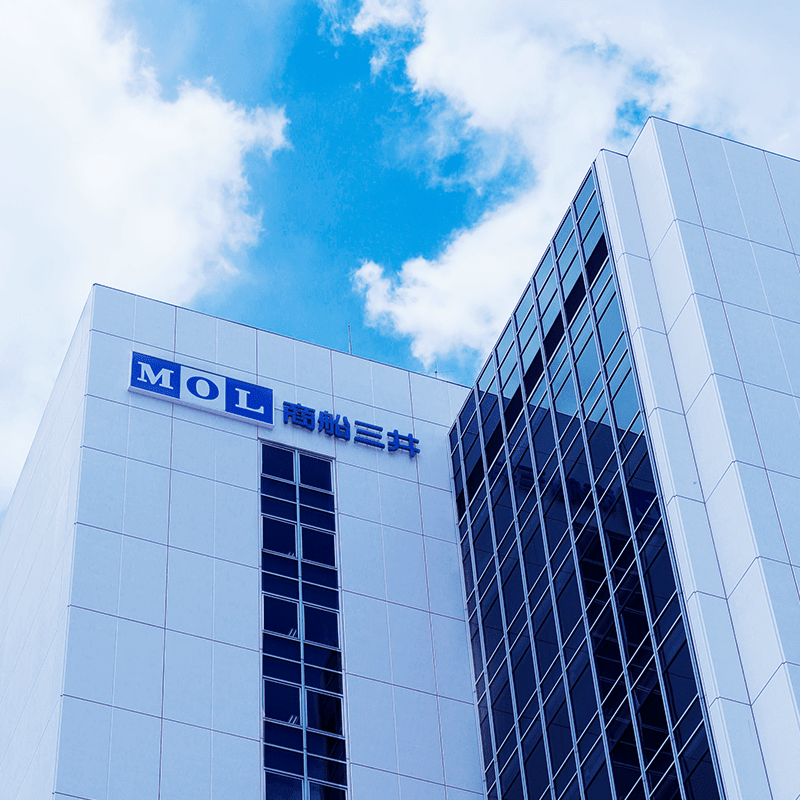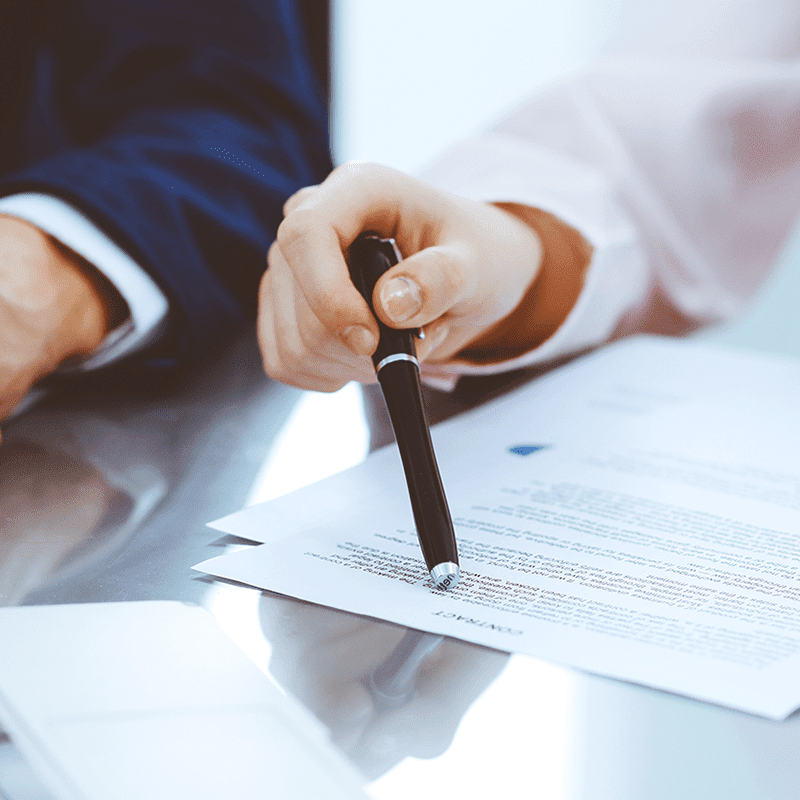BLOG
MOL initiatives in Norway, Europe and beyond; interview with CEO of MOL Shipping Norway AS and Chief Regional Representative, North Europe, Mitsui O.S.K. Lines, Ltd. Eiichi Ishiyama
- Eco Friendly
- General Shipping
2025.02.17
“Norway is advanced in the decarbonization field compared to other countries, with support from government subsidy programs” Mr. Eiichi Ishiyama, CEO of MOL Shipping Norway AS, said with regard to the country’s rapidly growing sustainability sector. With the Norwegian government supporting the construction of renewable energy infrastructure, as well as strong wind power resources in the region, MOL is taking a proactive approach to business development in the Nordic area, in line with our goal of achieving net zero greenhouse gas (GHG) emissions by 2050.
Mr. Ishiyama, who is responsible for business development in North Europe, is leveraging his past experiences to promote steady business growth and create opportunities, whilst collaborating with existing bases in the UK and the wider European area. He explained the scope of MOL’s activities in Norway so far, as well as why the region has strong potential for future business expansion.
Key Points
- MOL is expanding in Norway, leveraging its advanced decarbonization and government support.
- Norway promotes green hydrogen/ammonia, floating offshore wind using subsidies.
- MOL focuses on decarbonization, investing in green ammonia, CCUS, and offshore wind.
- Future plans include additional investments, expanding portfolio, potential entry into aquaculture.
- MOL aims to gain experience from Norway for global decarbonization contributions.
Leveraging Past Experiences
--- Despite being located on opposite sides of the globe, Norway and Japan share many similarities. Both countries boast stunning natural landscapes and a deep cultural reverence for tradition. Moreover, their strong seafaring cultures have given birth to flourishing maritime industries, with cargo handling, shipbuilding, and naval engineering strong components of both countries’ economies, with Japan and Norway ranking in the top 10 respectively in world merchant fleet leaderboards. To begin with, how has your background led to your current position in Norway?
Ishiyama
- After graduating university I joined MOL, and in my early career I gained experience in operations of car carrier vessels. Also, I worked for our ship management division and had experience of S&P(Sales and Purchase) and cost control for ship management. Then, I was responsible for operation, chartering and fleet management of a variety of tankers such as product tankers, methanol tankers, etc, and management duties.
- During this time, I had several opportunities to work not only in Tokyo, but also in a joint venture partner’s office in Copenhagen for 6 months, trading houses for two years, our Singapore joint venture company between MOL and Danish company for 4 years, and MOL’s Houston office from 2017 to 2021. Within the Houston period, I was responsible for business development in the tanker business, covering all of North, Central, and South America. Since 2023 I have been based in Norway, handling business development in the Nordic region.
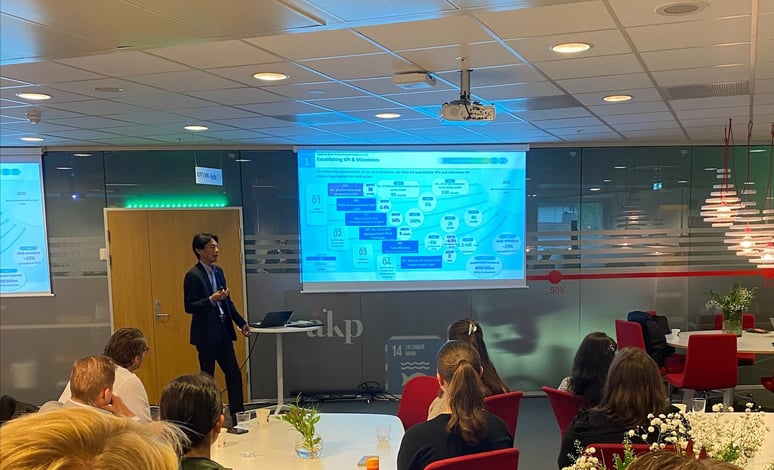
Mr. Eiichi Ishiyama, CEO of Mitsui O.S.K. Lines Shipping Norway AS, at events organized by Blue Maritime Cluster
--- As a leader that has experience within MOL’s operations in Japan, Singapore, and the US, what unique challenges were you presented with upon taking the helm of the Norwegian business?
Ishiyama
- Our team is relatively small, compared to the US and Singapore where we already had established offices. In those cases, it was relatively easier to take over the prior assignment of my predecessor, whilst in Norway, we are building the office from the ground-up. From the point of management, I see that our staff are very knowledgeable. While Norwegians have some similarities with Japanese people, such as being reliable, they often have a very rational way of thinking when it comes to business style.
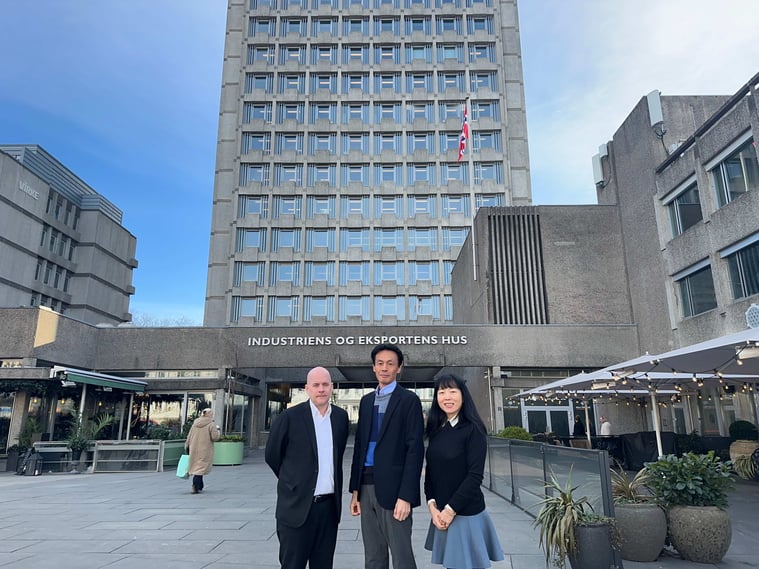
Team members with Mr. Ishiyama
A Region-wide Push Towards Sustainability
--- MOL as a wider group has placed a large importance on the sustainability of its operations, in line with greater worldwide pushes towards net-zero emissions by 2050. Globally, the business has led by example through unique watercraft, from Japan’s first hydrogen passenger ship ‘HANARIA’ to the Wind Challenger-equipped Shofu Maru, which decreased daily fuel consumption by up to 17% due to its revolutionary ‘hard sail’ propulsion system. Specifically in Norway, MOL has provided investment for Odjfell Oceanwind, a leader in offshore wind farm technology working on upcoming projects including GoliatVIND amongst others. What key milestones can the shipping industry expect regarding sustainability in the next few years, and how will MOL achieve these aims in Norway?
(Please see the related article at the end of this blog for more information on our related initiatives. *1)
Ishiyama
- Even now, if a vessel is equipped with a methanol dual fuel engine, it is possible to operate a net-zero voyage by using bio-methanol as fuel, and MOL has already achieved this, but this is a pilot case and is not commonplace yet. In addition, ammonia-fueled vessels will be completed within a few years, but it will take some time for ammonia-fueled vessels to become widespread, including the development of ammonia bunkering infrastructure. Considering these situations, Norway is one step ahead of other countries.
Although it is for short-distance voyages, Norwegian ferries are already being electrified, and ferries equipped with hydrogen fuel cells are also in operation. Asahi Tanker, a group company of MOL, also operates an EV bunkering vessel in the Tokyo Bay, and the ship uses fuel cells supplied by a Norwegian company. The Norwegian government is supporting the construction of hydrogen and ammonia-fueled vessels and its related infrastructure by suppling subsidies, using the huge profits generated by oil and gas industries. Then, such businesses opportunities and technologies are developing relatively quickly compared to other regions.
In addition, as Norway has abundant and relatively cheap renewable electricity generated by hydroelectric power, there are many green hydrogen and green ammonia production facility projects, and the Norwegian government is promoting fuel conversion to hydrogen and ammonia by using subsides. Both demand and supply exist in Norway.
The Norwegian government has set a goal of 50-55% reduction of CO2 emissions by 2030. This also applies to CO2 emissions from oil and gas platforms which generate electricity on-site by using gas produced by themselves. Currently, with the support by the government, these platforms are being electrified little by little by building offshore floating wind farms. These facilities also require offshore supporting vessels which are also shifting to alternative fuel little by little. - Through our involvement in such decarbonization-related businesses in Norway, we hope to gain experience and knowledge that will contribute to decarbonization not only in Norway, but also in Asia and the rest of the world.
(Please see the related article at the end of this blog for more information on our related initiatives. *2) 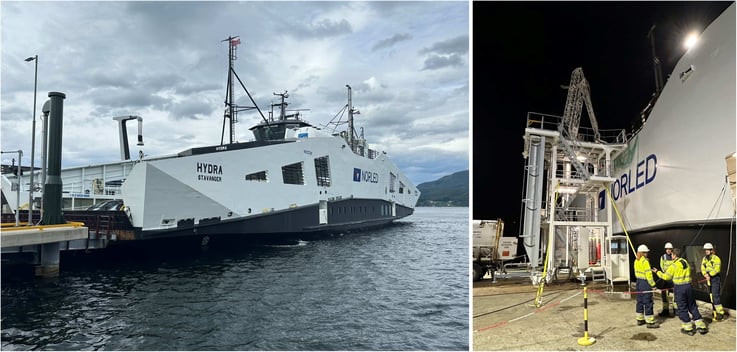
MF Hydra, the world's first hydrogen ferry developed by Norled
--- Why do you think MOL is the ideal partner for many of these projects in Norway?
Ishiyama
- We already have 8 related companies in the region, with most of them starting as joint ventures and then increasing our ownership. Norwegians are very open-minded towards finding new business partners, and historically, Norwegian maritime companies have very good experience with dealing with Japanese counterparts (shipyards, owners, banks), making Japanese companies a trustworthy and preferred partner for many Norwegian companies. Unlike equity funds or infrastructure funds, MOL wants to build partnerships based on a long-term vision, which has impressed many potential investment candidates.
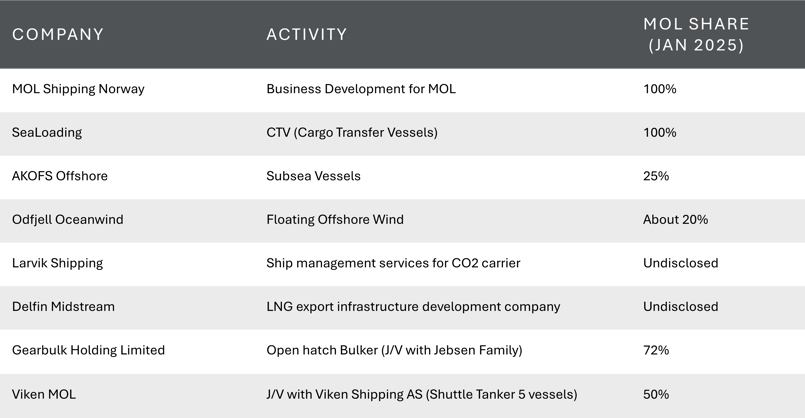
Our 8 related companies in the region
Working in Diverse Fields to Create Value
--- In Norway specifically, MOL is involved in a number of fields, from CO2 transport supporting the CCUS value chain to desalination vessels in collaboration with EnviroNor AS, amongst many others. Currently, which projects in Norway are you most focused on developing?
Ishiyama
- We are mainly focused on the decarbonization business opportunities, including green ammonia and CCUS related business industries, offshore supporting vessels, and supporting current existing MOL related companies, whilst cooperating with our head office in Tokyo and main Europe office in London. We` are also interested in aquaculture and its related fields since aquaculture is second largest industry in Norway.
- We have had several new staff at the office, with a new member with a financial background in shipping bringing us new opportunities. As a leader, I have conducted a lot of meetings and conferences with both current and potential partners to further our presence in the region.
- Last year MOL invested in Odjfell Oceanwind AS, a Norwegian floating offshore wind specialist, as well as making increasing investments in other companies such as Gearbulk Holding AG based in Switzerland, open hatch bulkers provider with operations in Norway. These were mainly handled by our head office and London location; however, the Oslo office is also supporting these projects.
- Aside from these two, MOL engaged in several existing companies in the region. SeaLoading Holding AS, which is 100% owned by MOL, is engaged in operating Cargo Transfer Vessels. AKOFS Offshore is operating subsea support vessels. In the CCUS area specifically, we also have a stake in Larvik Shipping, which has provided ship management services for CO2 carriers for over 35 years. For the provision of shuttle tankers, we are engaged in our Viken MOL joint venture, with a 50% stake invested by MOL.
(Please see the related article at the end of this blog for more information on our related initiatives. *3) 
Our team has contacts with a wide variety of companies in Norway. For example we had meetings with fish farmer companies in Norway.
--- Would you be able to break down MOL’s involvement in the CCUS supply chain further?
Ishiyama
- MOL has expertise in transporting liquefied gases such as LNG, LPG, and ammonia, and has also invested in Larvik Shipping to acquire expertise in transporting CO2. Utilizing this knowledge and experience, MOL is working to participate in CO2 transport in CCUS projects around the world.
In the Nordic region, several CCS projects are planned, particularly in Norway, we are working to participate in these projects from point of CO2 transportation. In addition, there are several companies in Norway that have been developing onboard CCS to capture CO2 emitted from vessels. Currently, LNG is the main alternative fuel for our vessels, however LNG also emits CO2. Therefore, onboard CCS is considered to be one of the effective solutions to reduce CO2 emissions from vessels. Currently, MOL is working with various manufacturers to evaluate their equipment and build up a CO2 value chain. 
(Left) People taking a walk in the forest in summer.
(Right) Cross-country skiing is one of popular winter activities.
Building Bridges and new Opportunities
--- How do you company integrate operations between different geographic regions, and in particular between Japan and Norway?
Ishiyama
- Cross communication is very important, so we always share information between London, Tokyo, and other related offices closely. Online meetings help us to smooth communication, however, I also value in-person communication as a way of gauging someone’s actual feelings. Therefore, I make regular business trips to London and Tokyo to have close communication.
--- With MOL’s reputation remaining throughout as a hallmark of quality, it is clear that its future potential in Norway is only set to grow, especially with recent investments in offshore wind projects. Within the next few years, how are you expecting MOL’s presence to develop in the region?
Ishiyama
- The transition to net-zero is still in progress, but Norway is advanced in the decarbonization field compared to other countries with support by government subsidy system, so I wish to make additional investments in these areas and expand our current portfolio of eight companies by at least a few companies. In addition, the aquaculture industry is the second largest industry in Norway after the oil & gas industry, and many high-quality fish are exported to Japan. Therefore, I hope to contribute in some way in this field as well.
In any case, contributing to decarbonization, we would like to build a collaborative relationship by investing in local companies and engaging in M&A activities. As a result, I would like to generate cash flow by projects initiated by the Oslo office within the next few years.
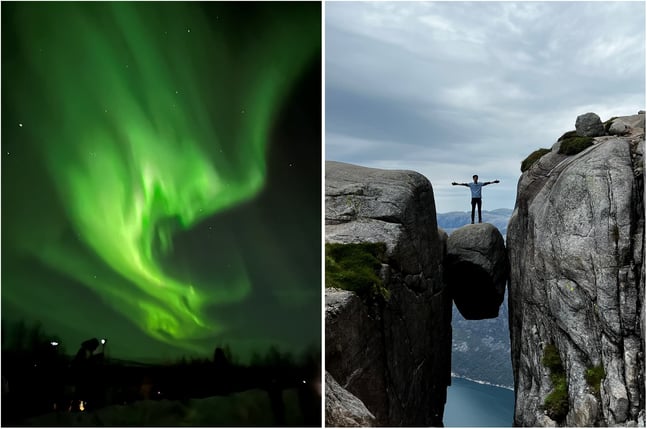
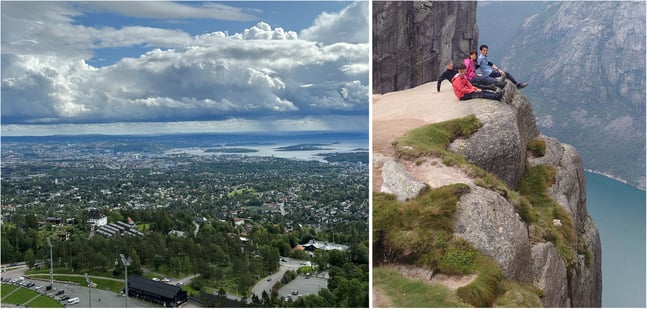
In Norway we can enjoy the wonders of nature.
(This article is based on interviews conducted in December 2024.)
Check out MOL's initiative highlighted in our blog post here!
Recommended Articles
2022.07.05
- General Shipping
2021.04.13
- Energy
2023.12.19
- General Shipping
2021.08.07
- Eco Friendly
2025.03.18
- General Shipping
Latest Articles
2025.12.09
- Eco Friendly
- General Shipping
2025.12.03
- General Shipping
2025.11.20
- Energy
- General Shipping
- BLOG
- MOL initiatives in Norway, Europe and beyond; interview with CEO of MOL Shipping Norway AS and Chief Regional Representative, North Europe, Mitsui O.S.K. Lines, Ltd. Eiichi Ishiyama
